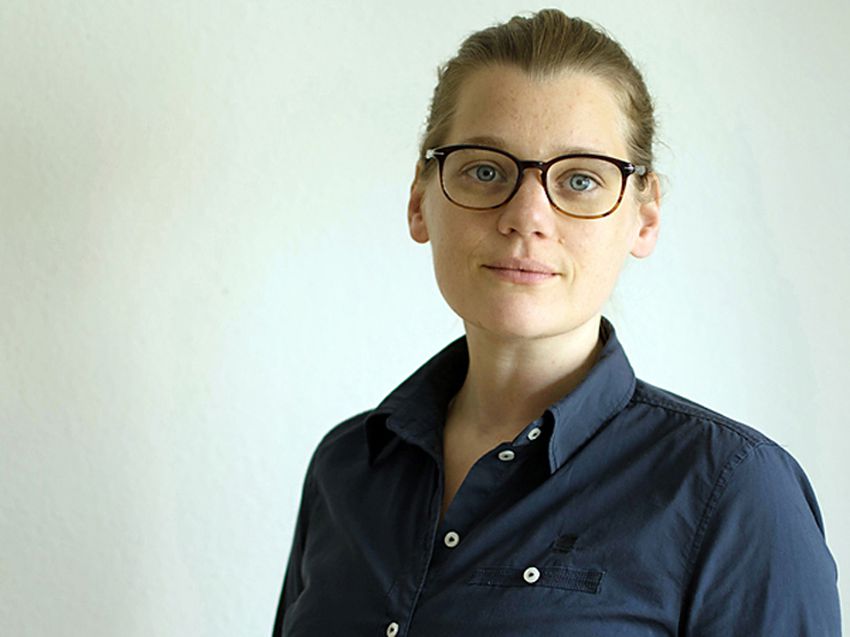Sustainability
Ella Einhell: "Happy beef is always blue"
Ella Einhell turns bones into glass, drawing on an old …

Books that you can throw away with a clear conscience, even if they are good? Cradle to Cradle, C2C for short, makes this possible: books become compostable. Oetinger Verlag published two such children's books last year. Are these the books of the future? How do you produce C2C? And why don't all publishers do it? An interview with Frauke Weller, production manager at the Oetinger publishing group.
CCB Magazine: Hello Mrs. Weller, your publishing house has published two biodegradable children's books. Are these the first books that decompose themselves before you want to throw them away at some point?
Frauke Weller:No, for one thing, we are not the first publisher and not the first in the children's and young people's book sector to produce C2C-certified books. For another, these books do not simply decompose on their own. So there is no "self-destruction mechanism" where the book would disappear into thin air after X years. But if you want to throw the books away at some point, they are not garbage. They can be partially recycled and the leftovers can be returned to the biological cycle. However, it makes no sense to dispose of books in nature, because a fresh fiber paper can be recycled up to seven times.
CCB Magazine: Okay, so what is C2C about? And what does Cradle-to-Cradle-Certified (TM) involve?
Frauke Weller:The C2C is about the fact that the residual materials that arise when processing waste paper for new recycled paper are biodegradable and ideally become fertilizers. And the C2C certificate does not only refer to ecological production, so it's not just about recycling products. It's also about using safe and healthy materials and raw materials. It's about the careful use of water and energy and about social responsibility. In summary, it's about a holistic sustainability approach, fair wages, fair working conditions, social sustainability that must be proven.

CCB Magazine: The C2C procedure is not new. It was developed by the German chemist Michael Braungart in the late 1990s. But it's only now that the topic is becoming established in the general public. How does a C2C production process work? Which materials are used?
Frauke Weller:For C2C production, we rely on certified partners in the printing industry. All ingredients of the materials used are tested according to human and ecotoxicological criteria right down to the last sub-supplier - only what is healthy for humans, animals and nature may be part of the print products. The production of books is a multi-factor process. A wide variety of materials must not only fulfill the criteria on their own, but also in their interaction with each other or with the processing machines. For us as a publishing house, it's therefore clear that we can only achieve this with reliable professionals. To this end, we work together with the print shop gugler in Austria, which has been C2C-certified since 2011 with a great deal of pioneering spirit.
C2C certified book production is a holistic sustainability approach: fair wages, fair working conditions and social sustainability that must be proven
CCB Magazine: How long does it normally take for the decomposition process to begin?
Frauke Weller:For this purpose, certain basic conditions such as temperature, humidity or decomposition bacteria must be given. Without these conditions, a C2C-certified book is as durable as any other book.
CCB Magazine: What does a C2C production cost? Do I save money or do I have to pay more?
Frauke Weller:The question about the concrete costs cannot be answered in a generalized way, books are simply too different for that. If C2C production were cheaper than conventional productions, we probably wouldn't be having this interview. In other words, the requirements that a C2C-certified product must fulfill are complex. Of course you have to pay for them. And that means the production costs are higher.
CCB Magazine: Does the consumer even notice that it is C2C? Does the book look different? Does it have a different feel?
Frauke Weller:The reader will not notice any difference between books produced as C2C and those that are not. If no corresponding label indicates this, no difference is perceptible.
If C2C production was cheaper than conventional production, we would not be doing this interview
CCB Magazine: How did your two C2C books sell?
Frauke Weller:We are very satisfied. With our books - "Paulas Reise oder Wie ein Huhn uns zu Klimaschützern gemacht" by Jana Steingässer and "Unsere Zukunft ist jetzt! Kämpfe wie Greta Thunberg fürs Klima" - exactly hit the nerve of the time and we are pleased that we can inspire and enthuse many children and families with them.
CCB Magazine: Why don't all publishers publish such books? What's the problem?
Frauke Weller:There are not many print shops that can even produce C2C-certified books. So it's a question of the available production capacity. But of course the additional costs are the more relevant factor.
CCB Magazine: The witch from Hänsel and Gretel is considered a pioneer of sustainable building. When will Oetinger Verlag produce the first children's book for eating?
Frauke Weller:If the stories we tell reach the hearts and minds of people, then we have reached our goal. We should leave the stomach to others.
Do you know it? Our new magazine on sustainability and culture
You want to have the new CCB Magazine for free? [Click here]
Category: Innovation & Vision
Also a good read
Subscribe to our monthly newsletter!